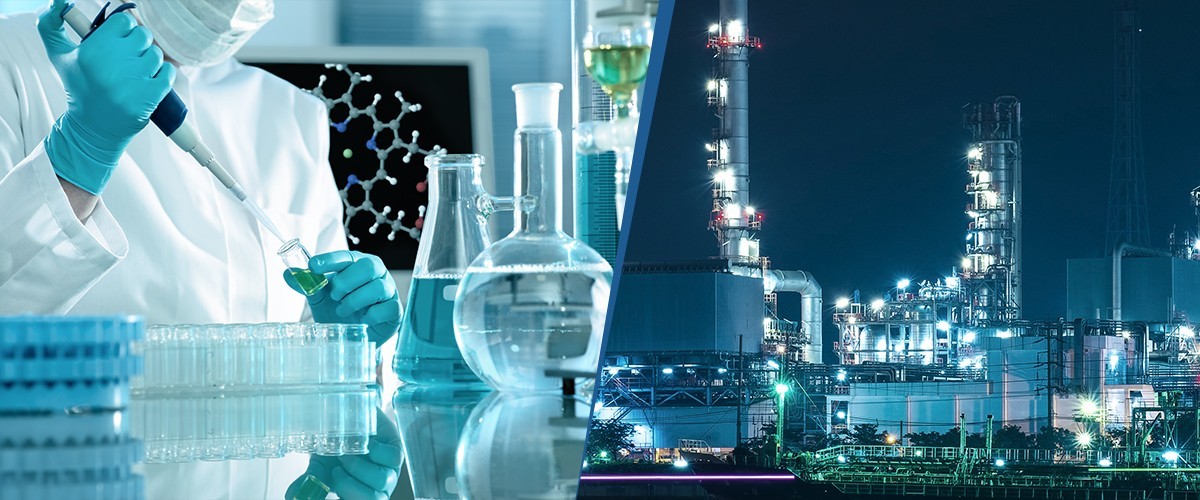
Chemical Engineers: Universal Engineers...!
Chemical engineers are trained to design entire processes, such as chemical manufacturing and purification, recycling, waste treatment/disposal, and environmental protection. They then execute a basic economic evaluation as well as a safety study. If these are acceptable, the process is implemented as part of equipment like storage tanks, mixers, reactors, distillation columns, etc., as well as ancillaries including pipes, valves, pumps, power, instrumentation, and control systems.
Each of these is designed by a chemical engineer to get enough information to be conveyed on to other engineers for the final design. In order to design the foundations and structural support, the civil engineer will need to know not the approximate dimensions of a distillation column, but also its weight when in use (including the material of construction and the weight of the substances being processed). The final dimensions may differ slightly as a result of the mechanical engineer's calculations, but not markedly enough to affect the foundation design. A basic structural support design can be created and slightly revamped to match the mechanical engineer's design.
A preliminary estimate of the wall thickness, operating temperature and pressure where pipes have to be in and out and whatever the required joints (e.g. can the top be welded on, or should the top be bridged for complete removal) is acquired by the mechanical engineer with the basic dimension of the process unit, the construction materials (to satisfy the chemical nature of the process). For heating, cooling, mixing, energy is provided in and out. Energy calculations play an important role in chemical engineering design. Dimensions, materials, temperature, and pressure will all be included in a chemical engineering design, as will power requirements. Thus, the electrical engineer can be supplied with the power required for pumps, mixers, heaters, compressors, refrigeration, and so on in order to develop and implement a scheme and the necessary equipment. The chemical engineer decides how to control a process (e.g., to a fixed temperature, a fixed pressure, a fixed chemical composition, or some combination of these) and passes on a control scheme plus calculations to a control engineer, who develops this and tends to turn it into a list of actual items and a project plan.
As a result, the chemical engineer must be familiar with mechanical, civil, electrical, and control engineering in order to collaborate with these other professionals (as well as enough chemistry to deal with the chemist, and increasingly certain aspects of biology). This is taught as part of the degree programme, whereas other engineers rarely (if ever) learn about chemical engineering. When they work together, however, they all improve their understanding of each other's work in order to be more effective.
Chemical engineers translate laboratory processes into practical applications for commercial product production, and then work to maintain and improve those processes. They rely on engineering's three basic pillars: math, physics, and chemistry, Biology is becoming increasingly essential. Chemical engineers who work in business and management offices frequently visit R&D and manufacturing facilities. Interaction with others and teamwork are essential for the success of chemical engineering projects.
Chemical engineers are most predominantly reported in manufacturing plants, research laboratories, or pilot plant facilities. They work with large-scale production equipment that is housed both inside and outside. As a result, they are frequently required to wear personal protective equipment (e.g., hard hats, goggles, and steel-toe shoes). Chemical engineers work in large-scale manufacturing plants to ensure maximum productivity and product quality while reducing costs. Chemical engineers used to develop and improve technical products in the aerospace, automotive, biomedical, electronic, environmental, medical, and military industries, such as: Vehicle fibers, fabrics, and adhesives with extreme tensile strength Implant and prosthetic materials that are biocompatible etc.
Biological drugs, biofuels, industrial biocatalysts, and genetically modified organisms (GMOs) are just a few of the many product breakthroughs driving biotechnology's rapid growth. Today's biotechnology industry is divided into ten subspecialties, each of which is represented by a different color. The primary biotech subspecialties are associated with the colors red, white, green, and yellow, but there are additional subsets and colors. The term "red biotech" refers to medical and pharmaceutical products and processes; "white biotech" refers to biocatalysis for industrial processes; "green biotech" refers to agriculture, including GMOs; and "yellow biotech" refers to food production. Chemical engineers can work in a variety of fields, including process development and scale-up, manufacturing, and process optimization. Biological engineers use engineering, biology, and biomechanics principles to design, develop, and evaluate biological health systems such as artificial organs, prostheses, instrumentation, medical information systems, health management, and care delivery systems.
Of course, many chemical engineers go on to specialize, which is why a basic graduate chemical engineer could be referred to as a "universal engineer."